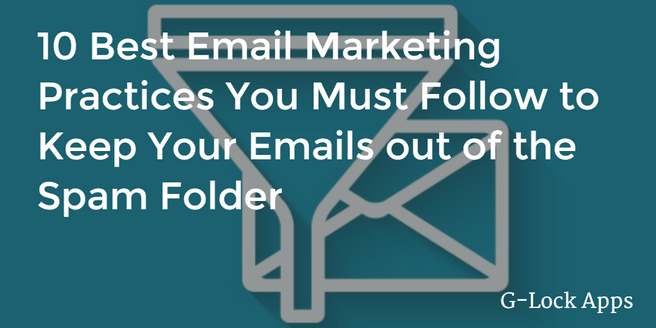As a tech-savvy individual, you understand the power of email marketing in reaching your target audience. However, with so many emails flooding people’s inboxes every day, it’s easy for your carefully crafted messages to get lost in the shuffle. One of the biggest challenges email marketers face is avoiding the dreaded spam folder. In this article, we’ll discuss some best practices to ensure your emails make it to your subscribers’ primary inboxes.
1. Build a Quality Email List
One of the most important steps you can take to avoid the spam folder is to build a high-quality email list. Avoid purchasing email lists or scraping email addresses from the internet. Instead, focus on growing your list organically by offering valuable content and incentives to encourage people to sign up. Make sure that all subscribers have opted in to receive your emails to avoid being marked as spam.
2. Use Permission-Based Marketing
Permission-based marketing is key to avoiding the spam folder. Always get explicit permission from subscribers before sending them marketing emails. Include a clear opt-in process on your website and provide an easy way for subscribers to opt out if they no longer wish to receive your emails. Respect your subscribers’ preferences and only send them relevant content that they have agreed to receive.
3. Personalize Your Emails
Personalization is a powerful tool in email marketing. By addressing your subscribers by their names and tailoring your content to their interests and preferences, you can increase engagement and avoid being marked as spam. Use data from your subscribers’ interactions with your emails to segment your list and send targeted messages that are more likely to resonate with each individual recipient.
4. Avoid Spam Trigger Words
Certain words and phrases can trigger spam filters and cause your emails to be flagged as spam. Avoid using all caps, excessive exclamation points, and words like “free,” “guaranteed,” and “act now” in your subject lines and body copy. Instead, focus on creating clear and concise messages that provide value to your subscribers without resorting to spammy tactics.
5. Monitor Your Deliverability Rates
It’s essential to monitor your email deliverability rates to ensure that your messages are reaching your subscribers’ inboxes. Keep an eye on metrics like open rates, click-through rates, and bounce rates to gauge the effectiveness of your email campaigns. If you notice a drop in deliverability, investigate the reasons behind it and make any necessary adjustments to improve your chances of landing in the primary inbox.
6. Test Your Emails Before Sending
Before sending out a mass email campaign, it’s crucial to test your emails to ensure they render correctly across different devices and email clients. Use a responsive design that adapts to various screen sizes and resolutions to provide a seamless experience for your subscribers. Test your emails for deliverability using tools like Litmus or Email on Acid to catch any potential issues before hitting send.
7. Provide Clear Unsubscribe Options
While it’s essential to grow your email list, it’s equally important to provide clear unsubscribe options for subscribers who no longer wish to receive your emails. Make it easy for subscribers to opt out of your emails by including an unsubscribe link in every message. By respecting your subscribers’ preferences, you can maintain a positive reputation and avoid being marked as spam.
By following these best practices, you can increase the likelihood that your emails will make it to your subscribers’ primary inboxes and avoid the dreaded spam folder. Email marketing is a powerful tool for engaging your audience and driving conversions, so it’s essential to take the necessary steps to ensure your messages are being seen and heard.
Remember to continuously monitor your deliverability rates, test your emails before sending, and provide clear unsubscribe options to maintain a positive reputation and maximize the effectiveness of your email marketing efforts.

